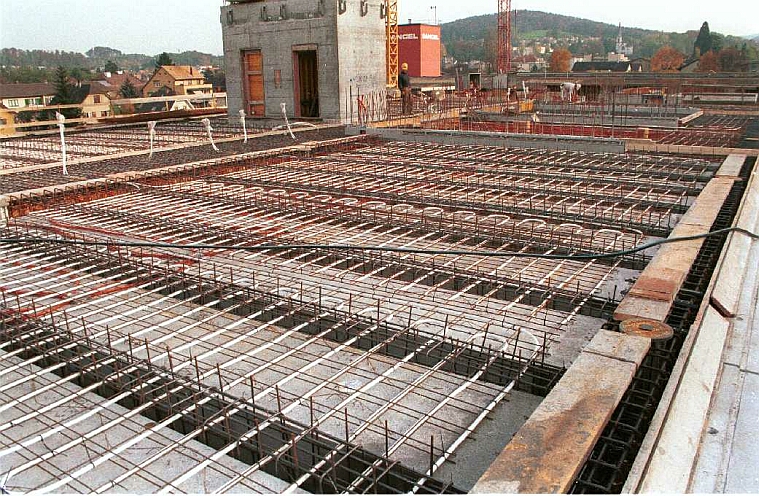Alternative forms of energy on the offensive
Geothermal energy - the future
Gas or oil ovens for heating, air-conditioners for cooling. Not only are those who think this way wrong, they are also displaying a great disregard for the environment, for in the field of building technology, alternative energy forms have long been in use. This was demonstrated to the public at the EMPA Academy on 6th May 2003, by experts from research and industry, who summarized the current state of the art and showed how the new techniques are applied.

|
Cooling in summer, heating in winter – as always, but in order for this to make ecological sense more and more use is being made of renewal forms of energy. One form of particular interest is geothermal energy. Near to the earth’s surface, the soil temperature is warmer than the air temperature in winter but cooler than in summer. During the cold season, heat can be drawn out of the ground for example by hydraulic means, using geothermal probes. Also suitable for this purpose are air circulation systems such as ground-air heat exchangers. Above ground, heat pumps bring the active medium to the required temperature. In summer, when cooling is necessary, extracted heat is returned to the ground. Contributing to these processes are a variety of different techniques such as thermo-active building components, natural or mechanical ventilation and sun-shades. Together, these techniques keep room temperatures constantly within the accepted comfortable range between 21 and 26°C. |
||||
|
Deep probes and piles Experts from Switzerland and neighboring countries described in their talks, how this subterranean energy reserve can be tapped. One possibility is the use of geothermal probes, which employ heat exchangers to extract or deliver heat. The depth of the boreholes varies from 50 to 350 meters, although in Switzerland a range of 80 to 120 meters is most common. A similar application is to be found in energy piles, which are particularly practical in areas of soft ground where the stability of building foundations must anyway be enhanced using piles driven deep into the earth. Tubing is attached to the pile reinforcing rods, and fluid pumped through it carries the absorbed subsurface heat to the heat pump. The cycle is reversed when the building needs to be cooled. |
||||
|
Energy manager buildings The perfect complement on the building side of things to alternative energy forms was presented by the EMPA itself: the thermo-active building component system tabs (reg.). Markus Koschenz, Head of EMPA’s Energy Systems / Building Equipment Laboratory, explained how this works in his presentation. As the name suggests, the (suitably made) building structure itself contributes actively to the energy management process. |
|||
|
In concrete terms this means for example that the floors and ceilings of individual storeys in the building take up or give out heat, so that the building mass itself acts as a thermal store. Because of the large area of the ceilings and floors, even a small temperature difference between these surfaces and the room air produces a sizeable heat flow. The same small temperature difference makes it possible to use natural cold "sources" to cool, and low-temperature energy to heat, so the earth or outdoor air can be used as a source. Plastic tubing cast into the concrete is used to transport the energy to and from the floors and ceilings, in the same way as in under-floor heating systems. Office and commercial premises are a special case, which, due to increasing thermal loads, must be cooled practically all year round. On the one hand the room temperature is driven up by the heat emitted by people and office equipment, and on the other by the sunshine falling on the often generously dimensioned glass façades so common nowadays. This additional energy is absorbed by the floors and ceiling during the day, and during the night cold water is pumped through the integrated plastic pipes to remove the heat from the structure. Now the earth itself can be used as a very suitable heat sink to absorb the waste energy. In this way the building exploits the full potential of renewal energy sources to economically maintain its internal temperature within the comfortable range. |
||||
|
Technical information: Markus Koschenz, Head of Energy Systems / Building Equipment Laboratory, Tel. 01 823 41 75,
Editorial: Martina Peter, Tel. 01 823 49 87, |
||||

